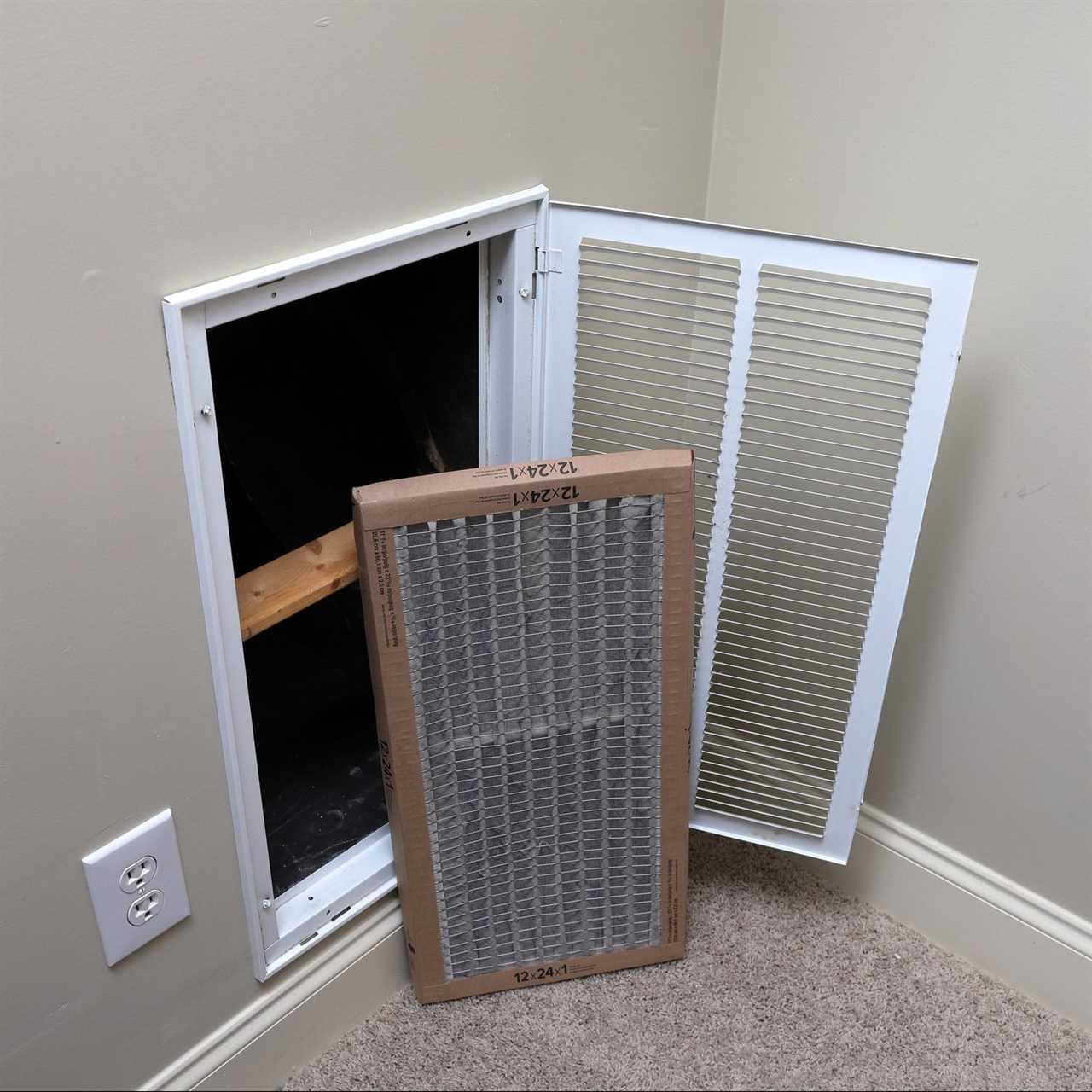Pop quiz: What’s the leading cause of a central air conditioner breakdown? Answer: A dirty filter.
Clogged and dusty filters block airflow, cause dirt to build up on the evaporator coils and ultimately can lead to motor failure. Regularly replacing your air filters is the single most important thing you can do to keep your central air conditioner running efficiently.
Ready for your crash course on filters? Let’s get started!
What Are Central Air Filters?
A central air conditioner filter is usually made of spun fiberglass or pleated paper or cloth, enclosed in a rectangular cardboard frame. Fiberglass filters, the cheapest kind, are about one-inch thick and are common in older systems. Newer central air conditioner models use thicker, pleated filters.
Filters clean the air that flows through your home by reducing pollen, bacteria, dust and pet dander. The air is forced through the filter (or filters) and the filter material catches the contaminates before they can circulate through your home. These filters also protect the air conditioner coils and motor from the same pollutants.
Central Air Filter Sizing
It’s important to buy the right size filter for a snug fit. Otherwise, air contaminants will bypass the filter, rendering it useless. Filters come in lots of sizes, so you can check your current filter(s) or air conditioner manufacturer’s site or your owner’s manual to determine the correct size.
Most filters display their size on the side like this: L x W x D, meaning length, width, depth (or thickness). If your filters don’t show this, measure it to determine the exact size. Most filters round up their sizes to the nearest whole inch. So if your filter measures 19-1/2-in. x 19-1/2-in. x 3/4-in., you’ll need a 20-in. x 20-in. x 1-in. filter.
If you don’t have a filter, measure the slot or vent where the filter will be located. If you live in an extra-hot climate like Arizona, there are return vents throughout the house, with a filter sized to fit each vent. In other parts of the country, you might just have one main filter that fits in a slot on the side, top or below your air handling unit. They’re usually located in the garage, basement or utility closet.

Central Air Filter Costs and Where To Buy
Air filters are available at home improvement stores as well as retailers like Walmart, Target and Amazon. There are a wide range of prices, depending on the size and type of filters you need.
Basic fiberglass filters range from about $4 to $8 per filter, while higher-rated (meaning they rank higher on filter performance, more on that below) pleated filters can cost $12 to $30 per filter. Some systems call for five-inch or six-inch-thick filters which can cost up to around $70 per filter.
While you’re shopping, remember: The higher the rating, the more expensive the filter. Here are a few common rating systems:
MERV: The Minimum Efficiency Reporting Value (MERV) was developed by the American Society of Heating, Refrigerating and Air Conditioning Engineers (ASHRAE). It measures how well the filter performs at trapping specific types of particles. The higher the MERV rating, the higher the efficiency (and the price).
The highest MERV rating isn’t always the best choice. Air filters with the highest MERV ratings have denser and more tightly woven fibers to catch the smallest particles. However, this means the heating, ventilation and air conditioning (HVAC) system must work harder to move air through the filter, and not all systems are equipped to handle this.
The best MERV rating for your particular HVAC system is one that sufficiently cleans the air in your home without obstructing air flow and straining the motor. Generally, a MERV 8 rating is a good place to start. You can go higher if your system is newer.
FPR: The Home Depot uses Filter Performance Rating (FPR) to rate its brand of filters on a scale of 1 to 10. The higher the number, the better it filters.
HEPA: HEPA stands for “high efficiency particulate air” and is a type of pleated mechanical air filter. HEPA filters efficiently remove dust, pollen, mold, bacteria and fine airborne particles. In most cases, you can’t replace a standard filter with a true HEPA filter because the ductwork isn’t designed for it. The filters may be too large to fit or cause too much resistance to airflow.
How Often Should You Change Your Central Air Filter?
How often you use your air conditioner and what type of filter(s) you use will determine how often you should change them. Typically, you should change out cheaper fiberglass filters every 30 days and higher quality pleated filters every 60 to 90 days. In the summer when your air conditioner is working extra hard, you might want to change them more frequently.
Here are a few signs your filters need to be changed:
- Vents look extra dusty;
- Dust accumulating near the vents on your walls or ceiling;
- Loss of cooling power in your AC system;
- System sounds like it’s straining upon start-up;
- Your air conditioner takes longer to cool the house to the desired temperature.
Here’s another way to put it — if your filters look filthy, it’s time to change them!
How To Change a Central Air Filter
The good news is, changing your filter(s) is easy. Here’s how it’s done:
- Find your filter location(s). Look for air return vents usually located on the ceiling or the wall, or a slot next to your unit.
- Unhook the latch on the cover grille.
- Remove the old filter and dispose of it.
- Wipe down the cover grille with a microfiber cloth to remove any dust.
- Insert the new filter, ensuring it is facing the correct direction. An arrow on the filter should point towards the ceiling or wall, or towards your unit.
- Close and latch the grille.
Did you miss our previous article...
https://rsssuperfeeds.com/life-hacks/carhartt-is-ready-for-fall-camping-and-outdoor-adventures






